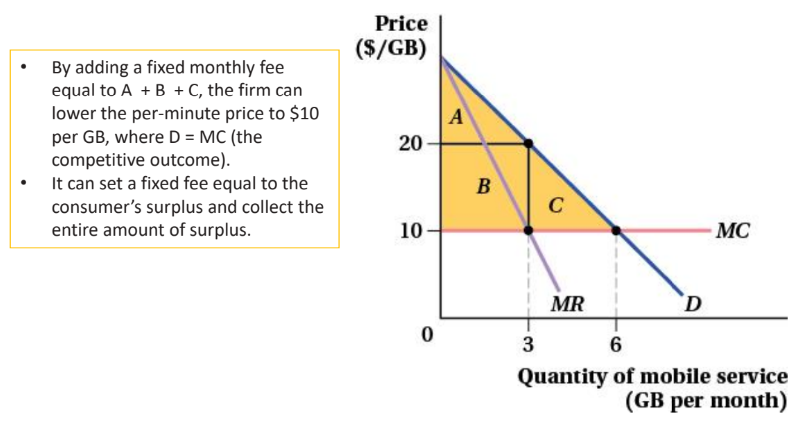Lecture 7 - Price Discrimination
What is The Basics of Pricing Strategy?
Definition of Pricing Strategy
A firm's plan for setting product prices based on market conditions and profit maximization.
Perfectly Competitive Firms
Charge the equilibrium market price, resulting in zero economic profit in the long run.
Firms with Market Power
More complex pricing strategies are required.
Optimal Strategy for Single-Price Producers
Increase production until marginal revenue equals marginal cost for maximum profit.
Price Discrimination
Charging different prices to different consumers for the same product.
What are the requirements for firms to charge different prices?
Requirements for Price Discrimination
Market Power
Firms must have the ability to set prices above the market equilibrium.
Prevent Resale and Arbitrage
Preventing customers from reselling products at higher prices is essential.
How do firms charges price differently?
Identifying Customer Demands Before Purchase
Direct price discrimination based on observable characteristics.
Perfect Price Discrimination: Charging each customer based on their willingness to pay.
Segmenting (Third-Degree Price Discrimination): Discriminating by customer group.
Identifying Customer Demands After Purchase
Indirect price discrimination (second-degree) depends on quantity.
Bundling products together.
Identical Demand Curves
Strategies like block pricing and two-part tariffs can still be applied.
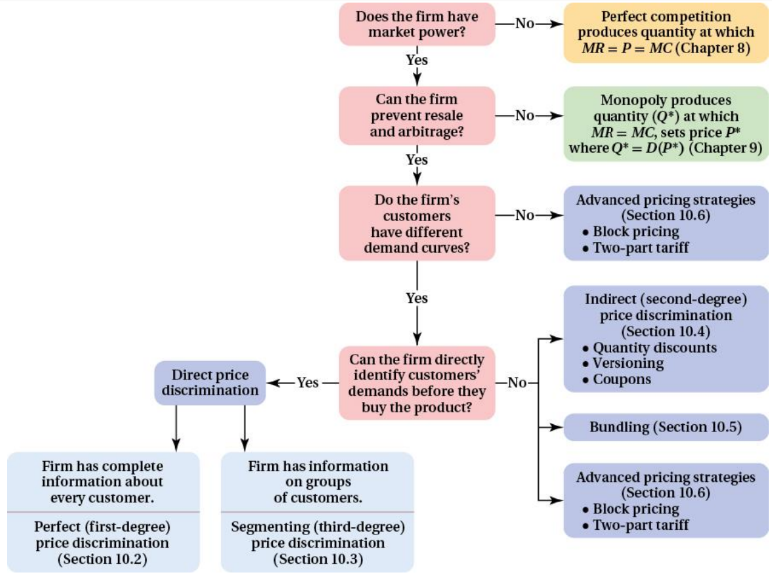
When to use perfect price discrimination?
When to Use Perfect Price Discrimination
Firm has market power and can prevent resale.
Customers have different demand curves.
Complete information about each customer's demand before purchase.
How does first degree price discrimination affects consumer?
Consumer Surplus Impact
Consumer surplus is driven to zero under perfect price discrimination.
zero surplus doesn’t mean zero utility.
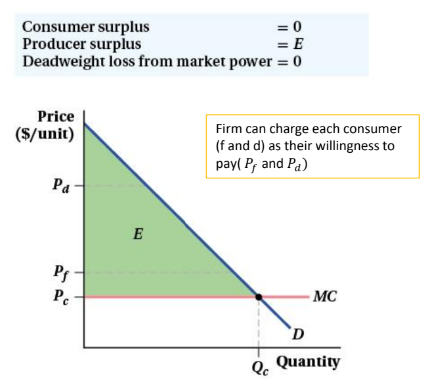
When to use third price discrimination?
When to Use Segmenting Price Discrimination
Firm has market power and can prevent resale.
Customers have different demand curves.
Identification of specific customer groups with different price sensitivities. e.g. student prefers to pay cheaper.
How does third degree price discrimination affects consumer?
The less demand elasticity consumers are, the more surplus a firm can extract from, this represents monopoly market really well when consumers don’t have much choice to pick from.
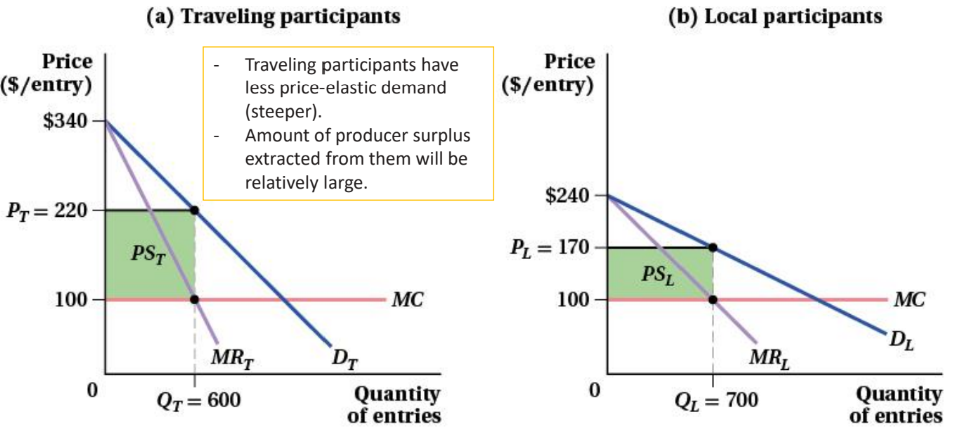
How to find segmentation price for each consumer groups?
Mathematical Approach to Segmenting
start with 2 demand curves
find the marginal revenue from both demand curves (P = a - bQ)
set marginal revenue equal to marginal cost for each to solve for Q.
using demand curve for each and plug the quantity back in to get the segmentation price.
From this we can find:
producer surplus
market equilibrium price
How to segment customers?
Ways to Segment Customers
By characteristics
age, gender, etc.
Past behavior
repeated customers may be more sensitive
Location
Over time
expensive when new and degrade in price overtime.
When to use second degree price discrimination?
When to Use Indirect Price Discrimination
Firm has market power and can prevent resale.
Customers have different demand curves.
Cannot identify customer demand before purchase.
What are some ways firm can charge second degree price discrimination?
Quantity Discounts
Charging lower per-unit prices for larger quantities.
Incentive Compatibility
Ensuring pricing options are attractive to the intended consumer group.
consumers are still able to get high CS.
Versioning
Offering different product options to attract various consumer types.
markup must be higher for segment with less elastic demand.
How does second degree price discrimination affects consumer?
Since it is an indirect price discrimination, consumers will choose the option that yield their consumer surplus the most.
What is a bundling and when to use it?
Definition of Bundling
Selling multiple products together at a single price.
When to Use Bundling
Firm has market power and can prevent resale.
Demand for products is negatively correlated.
Examples of Bundling
Cable and satellite television providers.
How can firm increases revenue from bundling?
Positively Correlated Demand
No benefit to bundling when demand for products is positively correlated.
Negatively Correlated Demand
Bundling can increase total revenue when demand is negatively correlated.
a customer has high willingness to pay for one product and less WTP for another.
Types of Bundling
Pure bundling vs. mixed bundling.
What is block pricing and when to use it?
Block Pricing
Reducing prices for larger purchases without considering demand curves.
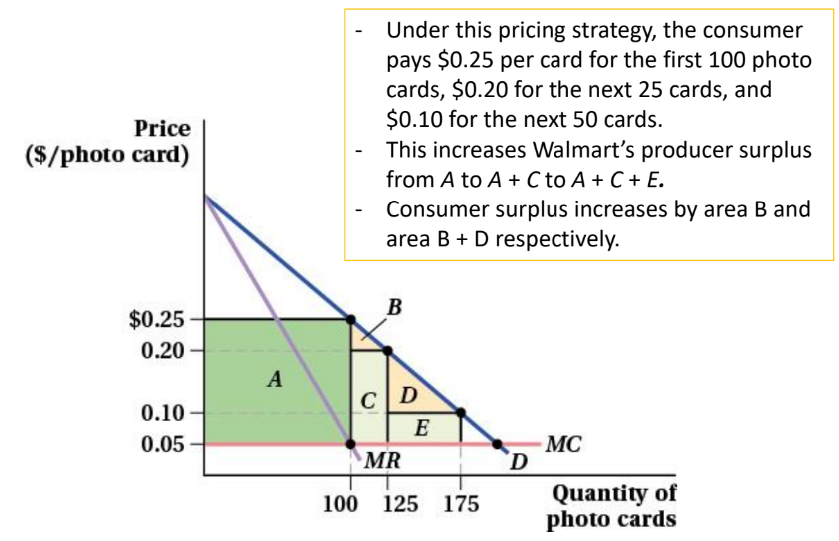
What is a two-part tariff?
Two-Part Tariff Definition
Pricing with a fixed fee and a per-unit price.
